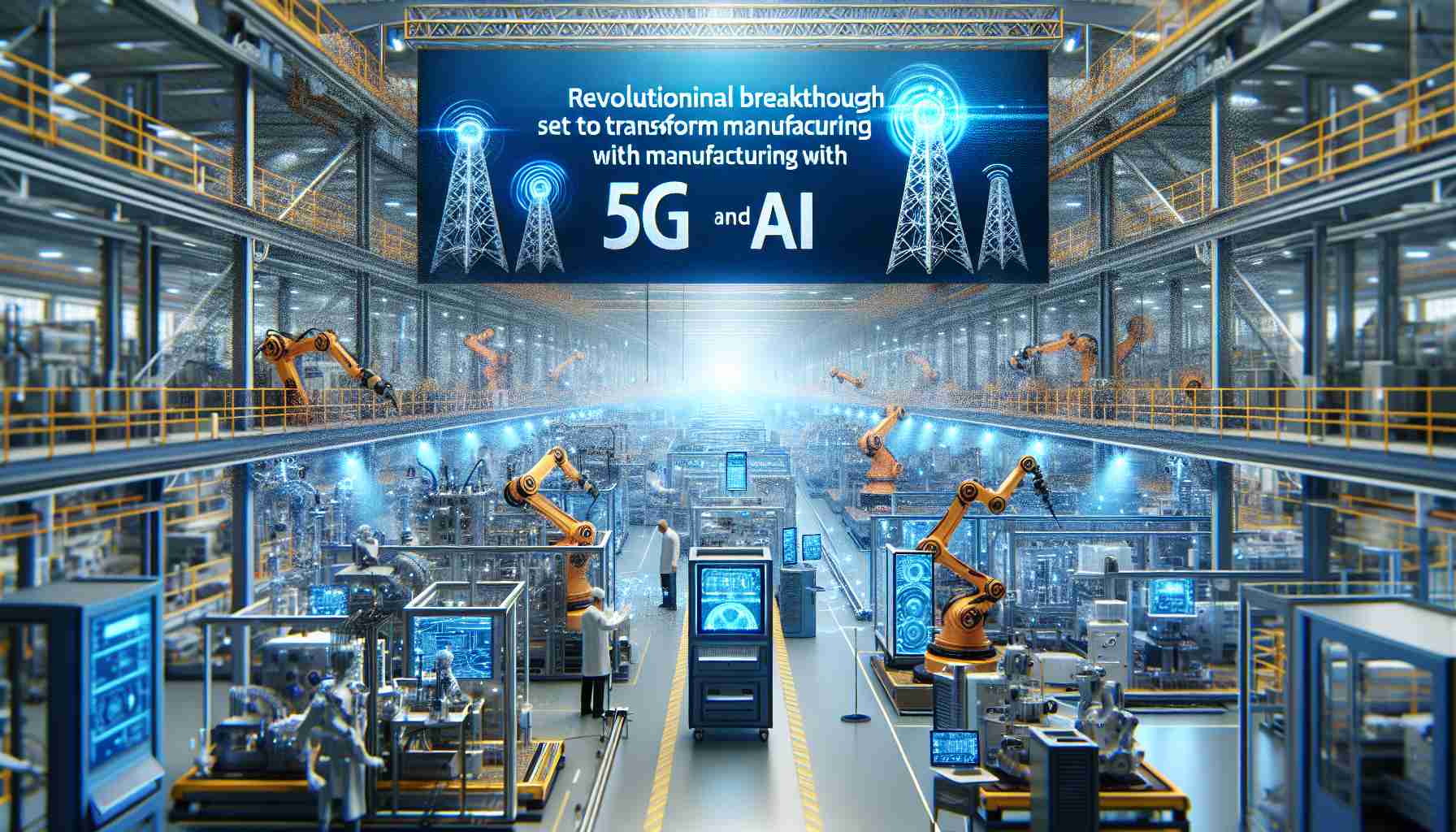In a groundbreaking development, Taiwan’s leading research institution and a prominent tech company have unveiled a transformative technology poised to revolutionize the manufacturing industry.
Industrial Technology Research Institute (ITRI), in collaboration with Generalplus Technology, has introduced an innovative “5G + AI Smart Factory Subsystem Heterogeneous Big-Little Core Platform.” This cutting-edge platform promises to enhance AI computing capabilities while minimizing energy consumption, a crucial advancement for electronics assembly, system manufacturing, and traditional industries. The platform enables smart identification and monitoring, steering Taiwan’s manufacturing towards increased automation and intelligence.
The spokesperson emphasized that the fusion of high-speed, intelligent detection technologies is now a critical element for achieving high productivity on production lines. By integrating hardware and software systems and leveraging Generalplus Technology’s microcontrollers, ITRI showcased this pioneering platform at the recent Taiwan International AI and IoT Exhibition. This showcase attracted significant attention from numerous technology firms.
The Director of ITRI’s Electronic and Optoelectronic System Research Laboratory highlighted the future trajectory of manufacturing, emphasizing comprehensive integration of networks and systems. This new era will see enhanced real-time interaction between humans and machines, advancing automated management approaches. Addressing the evolving demands for smart production in Taiwan’s semiconductor, ICT manufacturing, and optoelectronic industries, the partnership between ITRI and Generalplus Technology harnesses low-power edge computing AI chips and sophisticated system integration technologies.
Moreover, the platform’s high-performance MPU tackles high-load AI computations, while power-efficient MCUs connect sensors and peripherals. This architecture optimizes energy use and extends complex AIoT production and management systems, creating a reliable industrial control environment with potential applications in generative AI and large language models.
Enhancing Smart Manufacturing: Tips and Insights into AI and 5G Integration
The recent introduction of the “5G + AI Smart Factory Subsystem Heterogeneous Big-Little Core Platform” by Taiwan’s Industrial Technology Research Institute (ITRI) and Generalplus Technology marks a remarkable step forward in smart manufacturing. As industries seek to improve efficiency and sustainability, leveraging this kind of technology can offer significant advantages. In this article, we explore some practical tips, clever life hacks, and intriguing facts about integrating AI and 5G into modern manufacturing processes.
Tip 1: Embrace Edge Computing for Real-Time Decision Making
Incorporating low-power edge computing AI chips into your manufacturing setup can drastically minimize latency and enable real-time data processing. This technological advancement is essential for operations requiring immediate feedback and adjustments, ensuring your manufacturing processes remain efficient and responsive. The use of edge AI also reduces reliance on centralized data centers, curbing data transfer times and costs.
Interesting Fact: Revolutionizing Semiconductor Manufacturing
Taiwan is renowned as a global leader in semiconductor manufacturing, and the integration of AI and 5G technology promises to further enhance this status. By implementing smart factory solutions, Taiwan aims to streamline semiconductor production, making it more cost-effective and less energy-intensive. This move aligns with global environmental sustainability goals while boosting productivity.
Life Hack: Harness AI for Predictive Maintenance
Incorporating AI-driven predictive maintenance systems can preemptively address equipment failures, saving time and reducing downtime costs in your manufacturing process. By analyzing data patterns and equipment performance, AI can predict when maintenance is necessary, allowing manufacturers to schedule timely interventions without disrupting production.
Interesting Fact: AI’s Growing Role in Optoelectronics
Optoelectronic systems, such as those used in displays and telecommunications, are increasingly benefitting from AI integration. This trend highlights AI’s versatility in enhancing precision and efficiency across various technology sectors, improving outputs, and reducing energy consumption.
Tip 2: Optimize Energy Use with Efficient Systems Integration
By combining high-performance microprocessing units (MPUs) with power-efficient microcontroller units (MCUs), manufacturers can create systems that intelligently manage energy usage. Effectively balancing performance with energy efficiency results in cost savings and extends the lifespan of manufacturing technologies, ultimately improving the bottom line.
Life Hack: Invest in Workforce Training for Seamless Human-Machine Interaction
A successful shift towards smart factories requires a workforce adept at managing advanced technologies. Investing in training and development ensures that employees can seamlessly interact with automated systems, optimizing human-machine collaboration and enhancing overall production efficiency.
For more information on leading technology and innovation, visit the Industrial Technology Research Institute or explore the technological advancements from Generalplus Technology.
By adopting these key strategies and insights, manufacturers can stay ahead in the competitive industrial landscape, fostering a smarter, more sustainable future.
The source of the article is from the blog mivalle.net.ar


